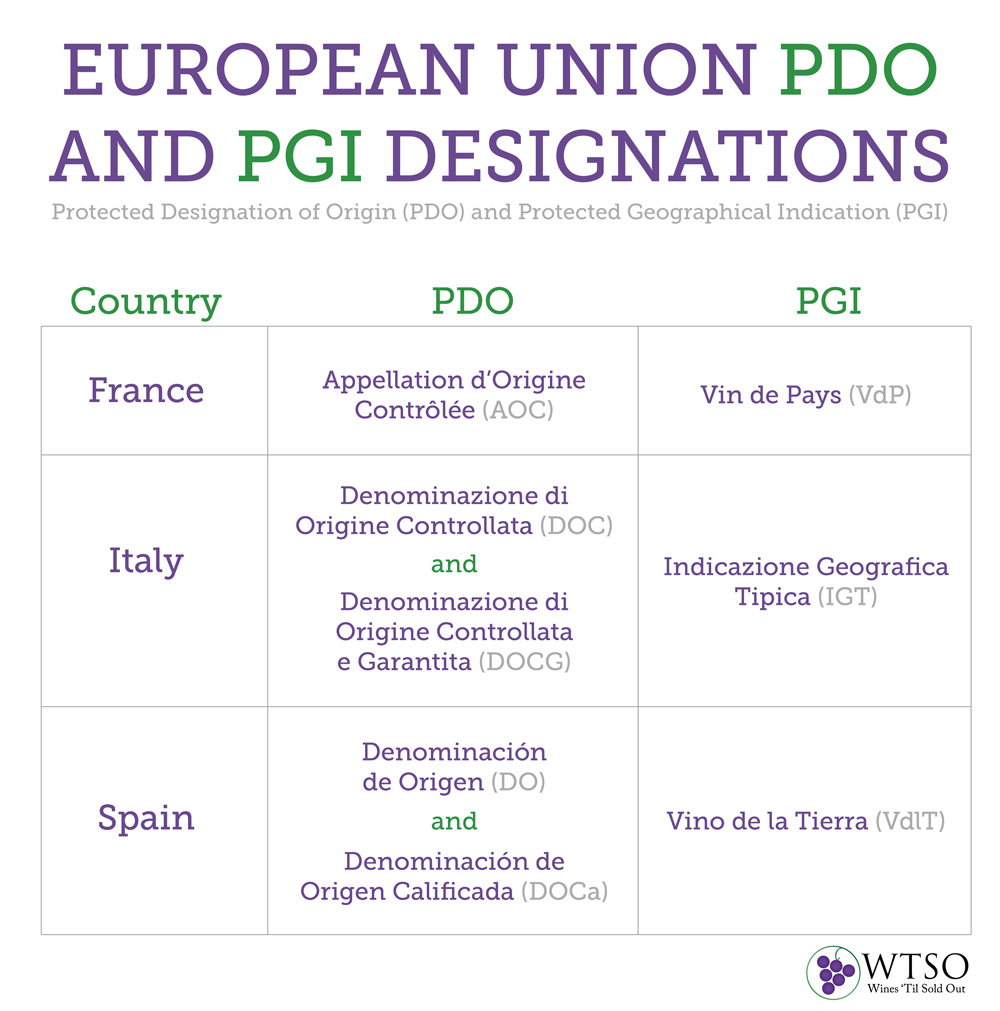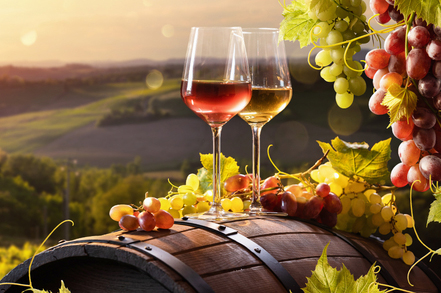In its simplest form, the term appellation is used to convey a wine’s place of origin; however, we can assess more information when we explore factors beyond geography. This article will introduce you to the European and American systems that control how a wine’s appellation is determined. Keep reading to better understand these regions for the next time you’re shopping for wine online.

Defining Appellations
If we look at a map of wine regions throughout the world, you will see there are clear geographical delineations that separate different vine growing places, commonly referred to as “appellations.” It’s important to recognize that the location of production is one of many aspects worth considering when we ask the following question – “what is an appellation?” A wine’s classification under a specific appellation is also dependent upon other factors, including the type of grapes used in production, vine planting density, yields, must (unfermented grape juice) weight, potential alcohol level, residual sugar level, and lengths of aging.
Keep in mind that these requirements can vary significantly from appellation to appellation, even if they are in close geographic proximity to one another. In some cases, these areas may actually overlap. Appellations can be as large as an entire country or as small as a single vineyard. The European Union, along with individual countries, regions, and municipalities worldwide, have laws that define their appellations.

European Union Wines
Wines from European Union (EU) countries that list a place of origin on their labels are grouped into two categories: Protected Designation of Origin (PDO) and Protected Geographical Indication (PGI). A PDO wine is grown and produced within a specified area, and only from the Vitis Vinifera species of grape varieties. It must also display typical qualities that can be attributed to the stated region. Diversely, at least 85% of a PGI wine must be grown within a specified zone, and may be comprised exclusively of Vitis Vinifera grapes or a cross between Vitis Vinifera and a different Vitis species. Like PDO wines, PGI wine production must happen within the region or place stated on the label, and they should display qualities representative of the area. Each EU country has their own system for designating wine appellations.
French Wines
France’s PDO wines are designated under the Appellation d’Origine Contrôlée (AOC) system. The requirements a wine must meet in order to receive this designation depend on the appellation. For instance, a wine labeled “Appellation Bordeaux Contrôlée” has different production regulations than one labeled “Appellation Margaux Contrôlée,” even though Margaux is an appellation within the larger area of Bordeaux. Vin de Pays (VdP) is the term for France’s PGI wines, which are subject to less stringent rules than AOC wines.
Italian Wines
Italy’s PDO wines fall under two headings: Denominazione di Origine Controllata (DOC) and Denominazione di Origine Controllata e Garantita (DOCG). Similar to the French system, the appellation designation of Italian wines is dependent on a variety of factors besides just geography. There are over three hundred DOC and more than seventy DOCG wines produced in Italy. DOCG wines, such as Barolo and Brunello di Montalcino, are denoted as the highest level of quality. Italy’s PGI wines are categorized as Indicazione Geografica Tipica (IGT), the equivalent of France’s Vin de Pays.
Spanish Wines
PDO wines from Spain, like those from Italy, can be classified under two main designations: Denominación de Origen (DO) and Denominación de Origen Calificada (DOCa). The DOCa wines have the highest distinction of quality – Rioja and Priorat are the only two to date. Similar to VdP and IGT wines, Spain’s PGI designation is known as Vino de la Tierra.

United States Wines
While most U.S. wines have an appellation to indicate their place of origin, these designations are based solely on geographical boundaries, unlike their European counterparts. According to federal and state laws, an appellation may be an entire state, a large region that may cross state lines, a county, or an American Viticultural Area (AVA). For more information on AVAs and American wine labels, check out our blog here.
Now that you know more about appellations, use your insight to discover, taste, and learn about new wines online!



